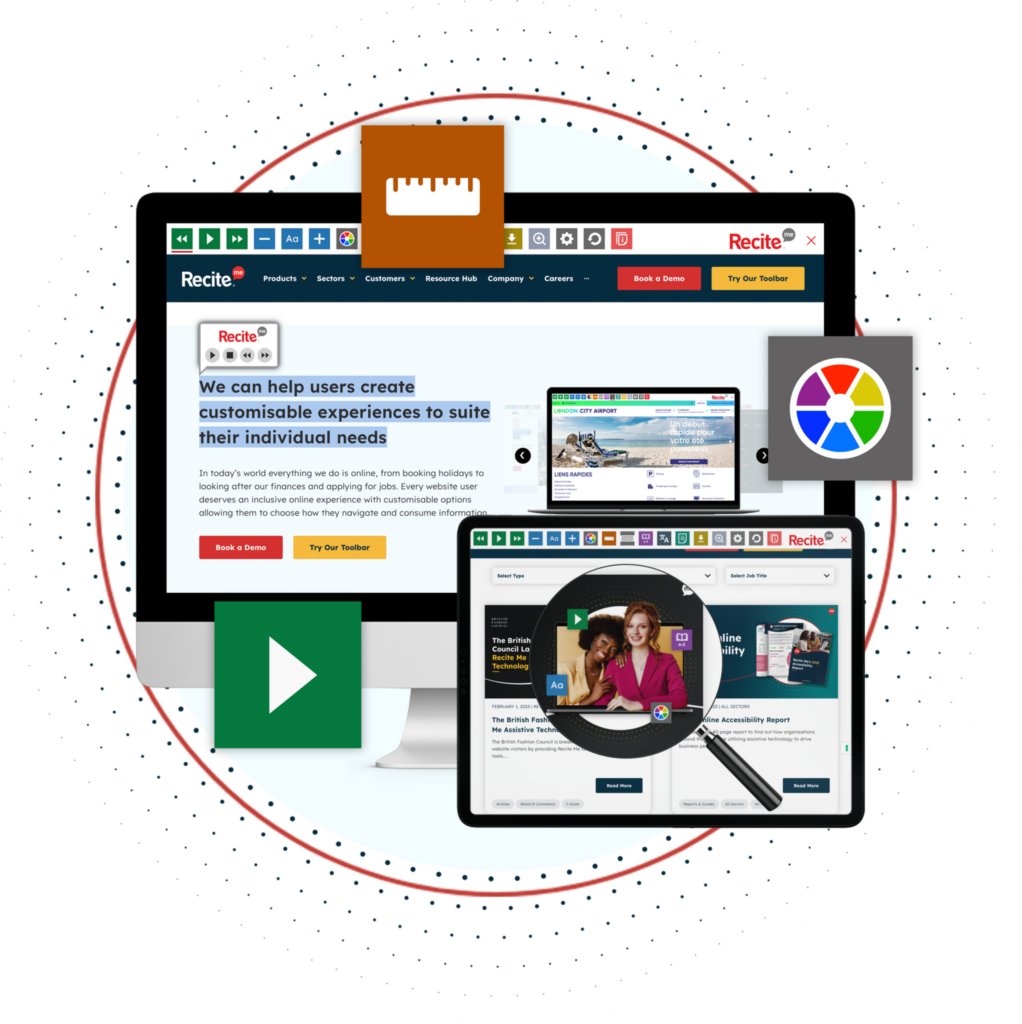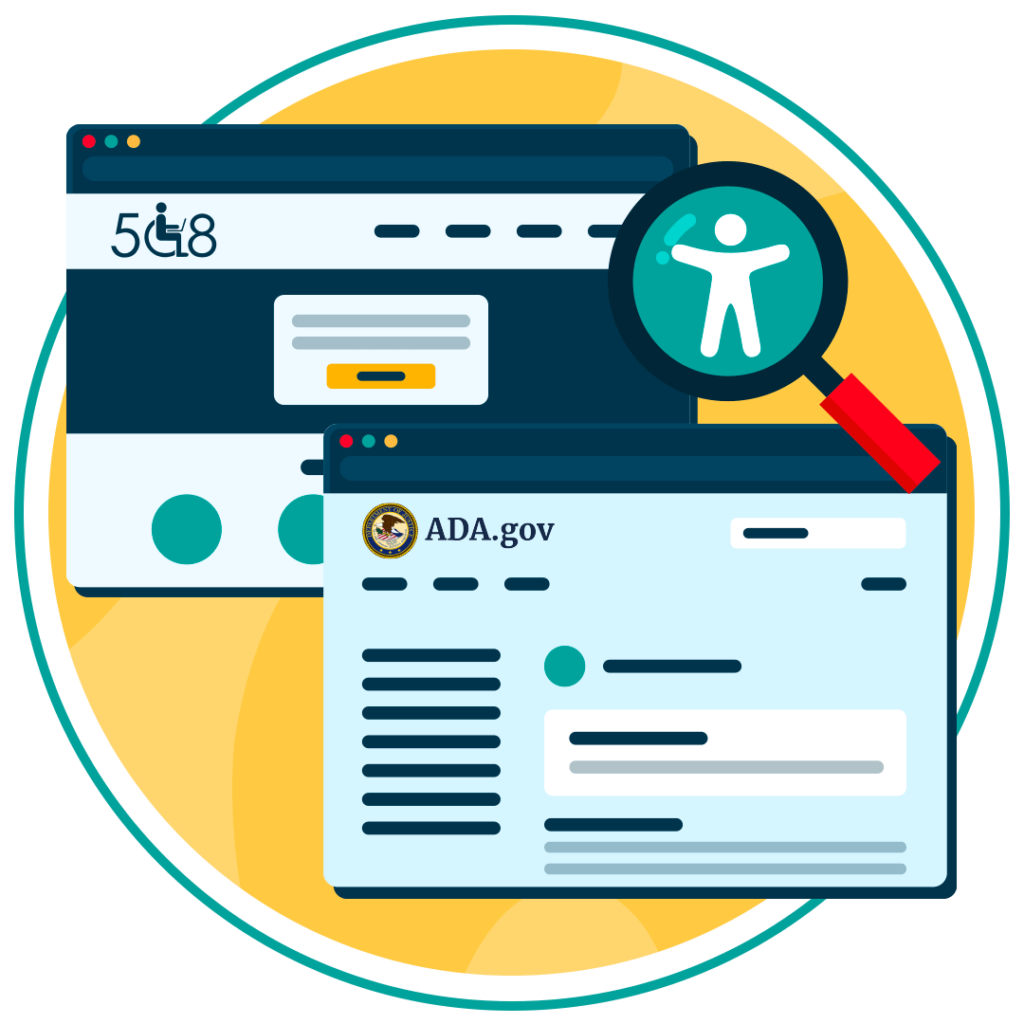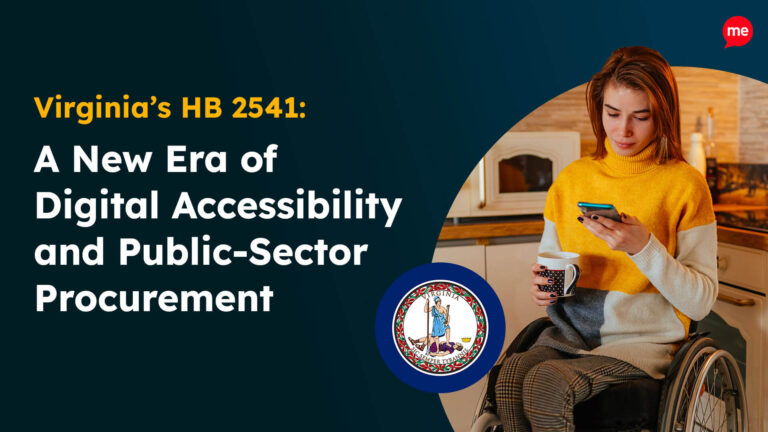Get A Free ADA Compliance Audit Of Your Website
Download NowUnderstanding the nuances between different web accessibility standards is crucial if your organization is to achieve enhanced inclusivity and ensure compliance with website accessibility legislation.
In the US, the two critical pieces of legislation are the Americans with Disabilities Act (ADA) and Section 508 of the Rehabilitation Act. Both aim to protect the rights of individuals with disabilities, but there are some crucial differences between the two that organizations must be aware of.
The good news is that distinguishing between the ADA and Section 508 is pretty straightforward—much more so than comparing the ADA to WCAG or Section 508 to WCAG, both of which we have already covered in previous articles.
So, with no further ado, let’s get started!
ADA Vs. Section 508: A Comparative Summary
There are many similarities between the two pieces of legislation, yet also some noticeable differences. We’ll delve into the specifics over the coming sections. But for now, here’s a quick breakdown of each with specific regard to digital accessibility.
Aspect | ADA | Section 508 |
| Developmental Authority | US Congress | US Congress |
| Legal Framework | US Federal Law | US Federal Law |
| Primary focus | Accessibility in public and private sectors | Accessibility in Federal Agencies |
| Applicability | USA (public and private entities) | USA (federal agencies and their contractors) |
| Enforcement | Department of Justice (DOJ) | Department of Justice (DOJ) and Federal Agencies |
| Compliance levels | Titles I, II, III | Standards specified by the US Access Board |
What is ADA?
The Americans with Disabilities Act (ADA), enacted in 1990, is a landmark civil rights law prohibiting discrimination against individuals with disabilities in multiple areas of everyday life, including employment, education, transportation, and all public and private places open to the general public.
ADA digital accessibility standards are divided into five titles, each addressing different areas:
- Title I: Employment
- Title II: Public Services (State and Local Government)
- Title III: Public Accommodations and Services Operated by Private Entities
- Title IV: Telecommunications
- Title V: Miscellaneous Provisions
What is the Section 508?
Section 508 was added to the Rehabilitation Act of 1973 in 1998 to account for additional accessibility requirements in an increasingly digital world. It requires federal agencies to make electronic and information technology (EIT) accessible to people with disabilities.
Section 508 digital accessibility standards require all federal agencies to ensure that employees with disabilities have the same access to information and data as their non-disabled peers. The same accessibility requirements extend to members of the public seeking information or services from federal agencies.

Free ADA & Section 508 Compliance Check of your Website
Detecting ADA & Section 508 Compliance issues has never been easier than it is now. At Recite Me we offer a free automated scan of your websites homepage. This will identify and highlight any non-compliance on your website. Followed by recommendations on how to implement the necessary changes to improve your websites accessibility score and standing.
What’s the Difference Between ADA and Section 508?
Let’s explore the similarities and differences between the ADA and Section 508 in terms of their legal status, scope, applicability, compliance measures, and enforcement.
ADA Vs Section 508: Legal Status
The ADA and Section 508 are both federal laws enacted by the US Congress. However, the ADA is a broader civil rights law that applies to both public and private sectors, whereas Section 508 focuses explicitly on federal agencies and their contractors.
ADA Vs Section 508: Scope
The ADA covers a broad range of business requirements and mandates accessibility in both physical and digital environments. For example, Titles IV and V have no bearing at all on digital accessibility. Conversely, Section 508, while also comprehensive, is more narrow in its focus on digital resources and ensuring that electronic and information technology is accessible.
ADA Vs Section 508: Applicability
Titles I, II, and III of the ADA apply to digital environments, mandating that public and private entities ensure people with disabilities have equitable access to employment, public services, and goods and services. Section 508, on the other hand, applies exclusively to federal agencies and their contractors, ensuring that all electronic and information technology used by these entities is accessible to federal employees and members of the public.
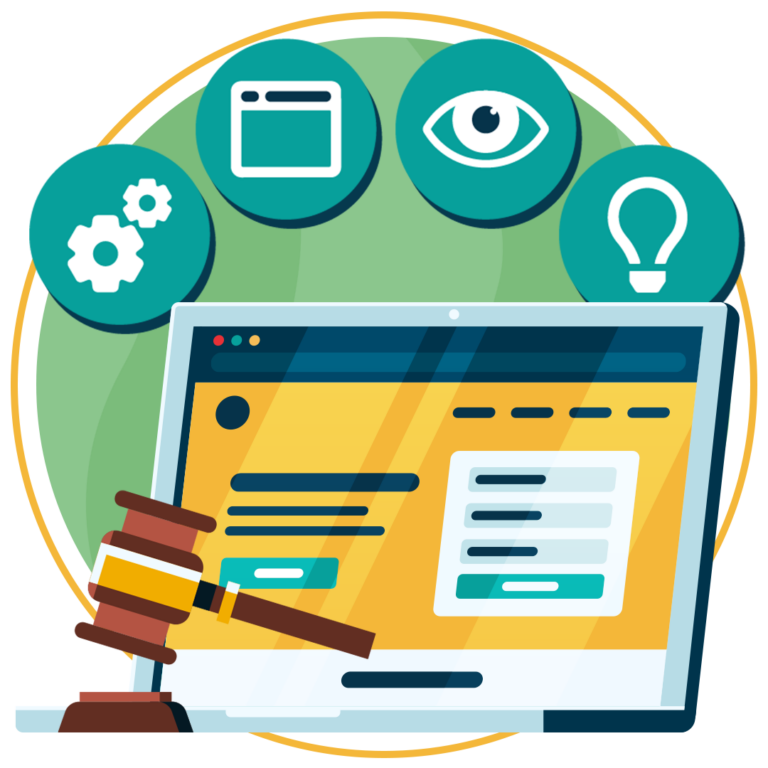
ADA Vs Section 508: Compliance Measures
Both ADA and Section 508 use the Web Content Accessibility Guidelines as a foundational resource. Technically, both pieces of legislation use WCAG version 2.0 Level AA as a framework, albeit with differing sets of compliance criteria. However, additional compliance efforts are recommended, especially for organizations looking to avoid unnecessary legal risk, because 75% of all federal lawsuits now reference WCAG version 2.1 Level AA.
ADA requirements:
- ADA Title I mandates that digital information regarding recruitment, hiring, promotions, training, job assignments, and termination be equally accessible to disabled candidates and employees.
- ADA Title II mandates that digital information regarding public services, programs, and activities must be equally available to disabled and non-disabled citizens.
- ADA Title III mandates that public-facing businesses provide full and equal online access to their goods, services, facilities, privileges, advantages, etc.
Section 508 requirements:
- Federal employees – All EIT infrastructure must facilitate equal access for employees with disabilities.
- Members of public – Disabled members of the public seeking federal information or services must have equitable access to digital resources.

ADA Vs Section 508: Enforcement
The ADA is enforced by the Department of Justice (DOJ), and non-compliance can result in private ADA lawsuits that may result in:
- Fines of up to $55,000 for the first violation, rising to $110,000 for each subsequent violation.
- Bills for plaintiff attorney fees, settlements, and remedial fees for court-mandated digital accessibility upgrades.
Section 508 compliance is also enforced primarily by the Department of Justice (DOJ), although other federal agencies also play a role. Non-compliance can result in Section 508 lawsuits initiated by either members of the public or the DoJ itself. Potential repercussions include:
- Fines of up to $55,000 for the first violation, rising to $110,000 for each subsequent violation.
- The revokement of government funding and grants.
Increased regulatory scrutiny moving forward.
Common Misconceptions about ADA and Section 508 Compliance
While the similarities and differences between the ADA and Section 508 should be relatively clear at this point, there are still a few lingering misconceptions that may land organizations in legal trouble. Let’s examine a list of common myths.
Myth 1: Section 508 Only Applies to Government Bodies
Incorrect. While Section 508 applies primarily to federal agencies, it also applies to government contractors and recipients of grants and federal funding. This includes:
- Any company that engages in contracts or operates within the supply chain of federal or state agencies.
- Charities, conservation groups, research institutions, and community development organizations.
- For-profit entities across sectors like healthcare, finance, education, and transportation.
Myth 2: ADA Compliance is Optional for Small Businesses
This might be true, as ADA Title I does not apply to organizations with fewer than 15 employees. However, outside of that, ADA stipulations apply equally to organizations of all types and sizes. What’s more, legal compliance should be considered even more of a priority for smaller businesses that don’t have the cash reserves to fund costly lawsuits.
Myth 3: Government Bodies Cannot Be Sued for Non-Compliance
Also incorrect. Federal agencies can be sued for non-compliance under both the ADA and Section 508. In fact, many already have been, including:
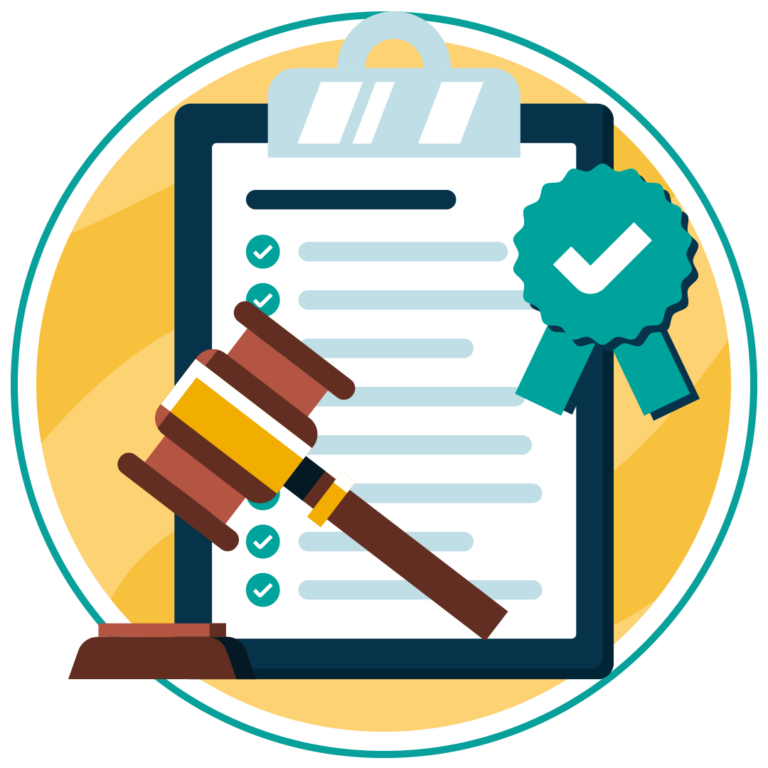
Myth 4: Compliance with ADA and Section 508 Means Sacrificing Design and Functionality
Typically, the opposite is true. Accessibility laws and guidelines are designed to improve usability for all users, not just individuals with disabilities. Therefore, adopting a universal design and incorporating accessibility best practices usually leads to easier navigation, cleaner user interfaces, and improved engagement.
You can learn more about how to design a website for ADA here.
Myth 5: No Further Updates Are Needed Once You Become Compliant
Believe this at your peril! Achieving initial compliance is an essential first step. However, maintaining accessibility as your online content is continually updated and replaced takes consistent monitoring and adjustment. Plus, legislative accessibility benchmarks are periodically updated in line with technological advancement. For example, in 2022, the DOJ announced proposed changes to regulations that would establish the Level A/AA criteria of version 2.1 as the new default standard for Title II ADA compliance.
Want to make sure your website is compliant with the Americans with Disabilities Act? Then unlock the ADA compliance checklist now. Discover actionable steps to ensure ADA compliance, helping you avoid lawsuits and any other negative consequences of non-compliance.
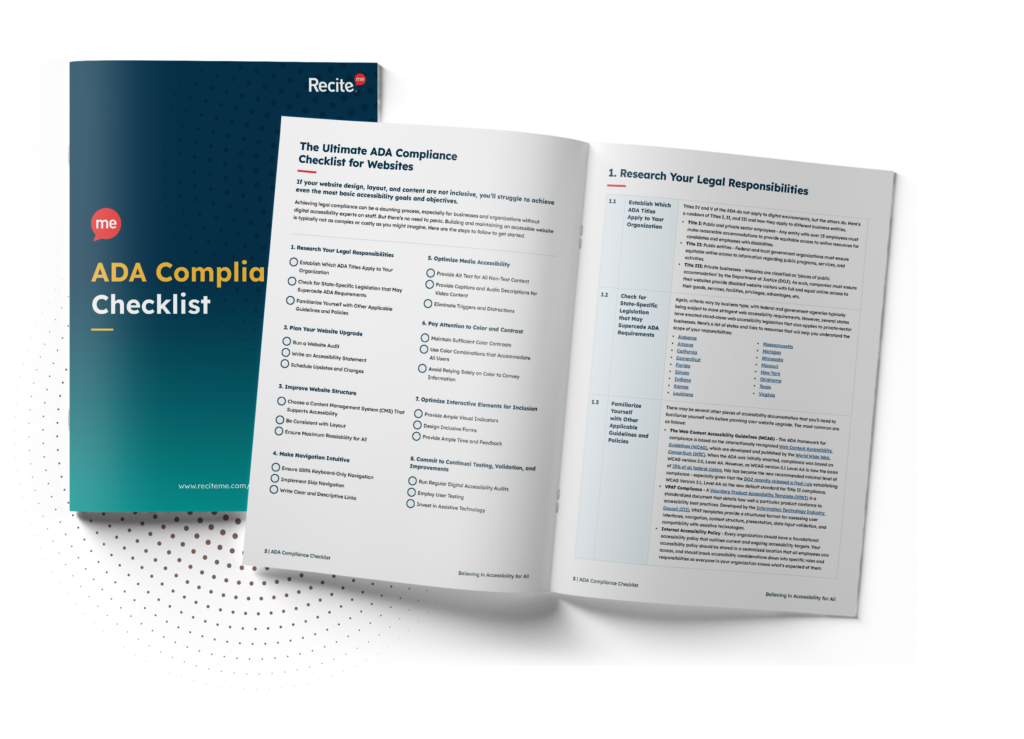
How to Comply with ADA and Section 508 Standards
While understanding the various legislative benchmarks and requirements can feel overwhelming, especially for organizations without digital accessibility experts on staff, several tools are available to help. Although, one of the best starting points is to check out our ADA compliance checklist.
Beyond this, Recite Me also offers several accessibility software solutions that assist with meeting the relevant legislative requirements and achieving enhanced accessibility and inclusion in general. Here’s how they work.
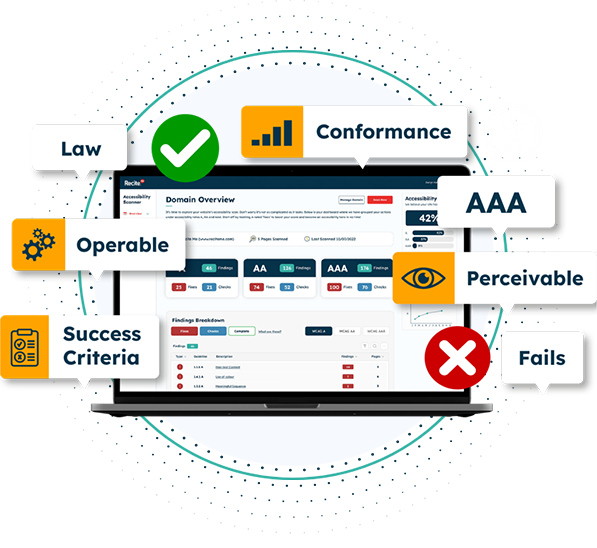
Accessibility Checker
The Recite Me Accessibility Checker tackles legal compliance by running 396 separate WCAG-based scans that audit back-end and front-end web development processes. Non-compliant elements are quickly identified and compiled into a detailed report in the form of a prioritized fix queue with recommendations on what to tackle first to become fully compliant in the fastest possible time frame.
- Step 1: Scan Your Domains – Choose between scanning single or multiple pages.
- Step 2: Identify Accessibility Issues – Identify the locations of accessibility issues on your website.
- Step 3: Fix Accessibility Errors – Boost your accessibility score by prioritizing fixes in line with WCAG Levels A, AA, and AAA.
- Step 4: Track Your Progress – Create and share custom reports with your team and roadmap the next issues in your fix queue.
Accessibility Toolbar
The Recite Me Accessibility Toolbar enhances website accessibility and inclusion at an individual user level by allowing visitors to customize fonts, text size, color contrasts, display language, and more according to their personal preferences, accessibility needs, and requirements. This improves online experiences for everyone, but particularly for individuals with sight loss, cognitive impairments, learning difficulties, physical disabilities, and varying linguistic needs. Some of the main features include:
- Personalizing font size, type, and color options.
- Choosing the exact color contrast between the text and background.
- Utilizing the mask screen tool to help with focus.
- Using the ruler tool to make reading easier.
- Downloading content as an audio file as an alternative to reading.
- Converting page content into over 100 on-screen languages.
